What should be used for nail extension?
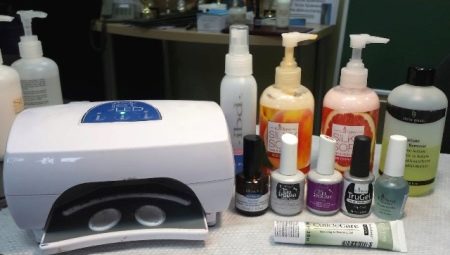
Many women dream of long and beautiful nails, however, not every girl can quickly grow them. That is why nail extension comes to their aid, which can be performed at any time in a salon or at home.
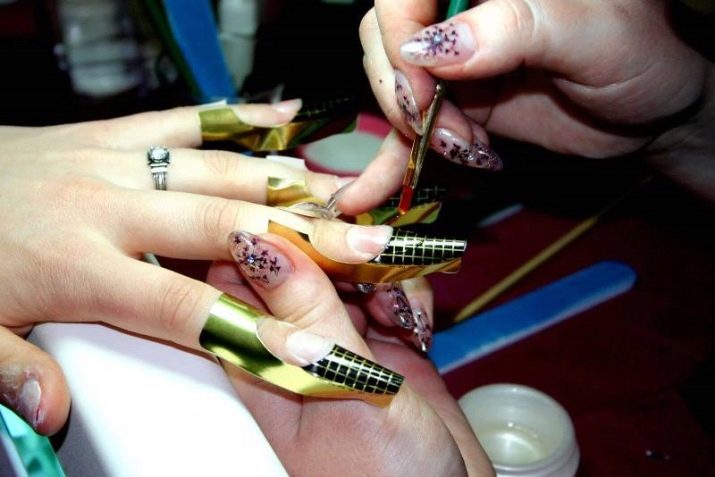
Necessary equipment
In order to build up nails, a set of tools and consumables is required to carry out all the necessary work. One of the most important accessories for this procedure is the UV lamp. The purchase of this device should be approached with special care, since the speed and quality of polymerization of the nail coating and comfort during the procedures depend on its power and efficiency. The lamp can be used when working with shellac and acrylic, in addition, it is often used to dry the gel coating.
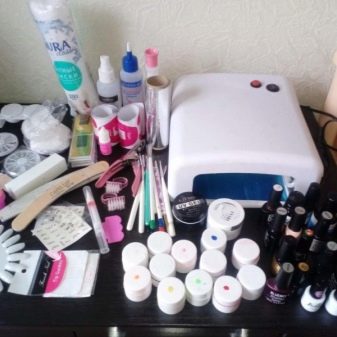
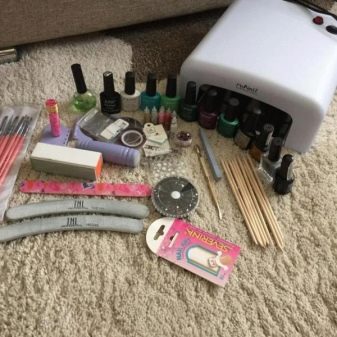
If you are just taking the first steps in manicure, then you can purchase the most primitive unit without any additional options, although the power of the device should be high: at least 24 W, and best of all - 36 W. Such a device will become the most impressive item of expenditure, however, it is undoubtedly worth it, since it is quite difficult to make a high-quality build-up without a lamp.
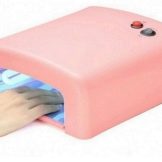
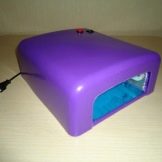
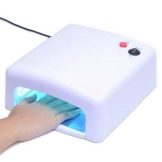

But if you plan to make money on manicure, then you should take a closer look at the models, supplemented with blowing functions, a touch monitor, as well as a timer and other "excesses". They make the procedure for using this lamp comfortable, however, such equipment is expensive, so if you only need a lamp for personal needs, then you can hardly recoup such an investment.
We will make a reservation in advance that it makes no sense to substitute marigolds covered with the most common decorative varnish under ultraviolet light, since the UV lamp does not dry out, but only polymerizes. It does not affect the coating with high temperatures - that is, you will not reduce the drying time, but you risk getting a cloudy color.
In addition to the lamp, many other tools are needed, and the following items are included in the minimum starter kit:
- a set of nail files;
- buffs;
- brushes with stiff bristles for stylish styling;
- pusher.
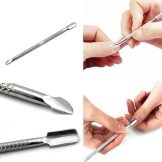
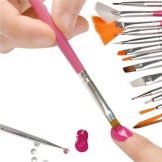
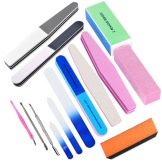
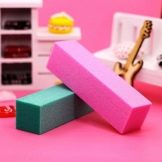
The list of materials looks like this:
- base gel is colorless;
- special modeling compound;
- fixing coating.
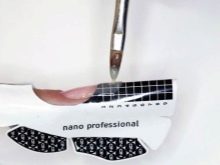
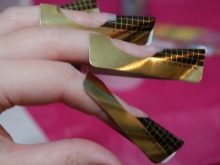
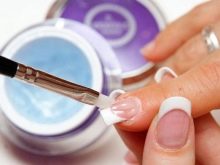
In addition, you will need a primer, as well as a dehydrator and bonder. Most inexperienced craftsmen believe that this is the same thing, however, this is far from the case. The primer is necessary for degreasing, removing the smallest particles of dirt and preparing the surface of the nail for adhesion due to a slight rise of the scales. The dehydrator removes excess moisture, improving the adhesion strength, and the bonder is an effective bonding component, due to which the gel fits well on the nail and strengthens on it, so that the built-up elements do not fly off from the first mechanical impact.

And, of course, not a single extension is complete without manicure glue. Let's dwell on the most important materials and the features of their choice.
- Nail files - they are used to give the marigold the required shape, and, in addition, to polish the entire surface and seal the tip of the plate. In previous years, metal devices were often used - today this technique is recognized as ineffective, because it leads to delamination of the nail plates. Experts recommend using products made of ceramics or glass. For a good manicure, it is advisable to take several files with different levels of abrasiveness, which is calculated in grits - the lower this value, the rougher the file coating.

To work with artificial surfaces, files with parameters 80/120 grit are used, and their own natural ones are filed with a tool with an indicator of 240 grit or more. As for the appearance, to give the desired shape to the free edge, it is advisable to use elongated files, for grinding the marigold near the cuticle, you should give preference to products in the shape of a boomerang, and a rectangular nail file is suitable for polishing the surface.

If you intend to do manicure regularly, then it makes sense to immediately purchase a large number of files of different roughness, since they soon become unusable and need to be constantly changed.
Separately, you should buy a buff file, which is used to polish natural nails, such processing must be carried out before building, therefore the tool belongs to the category of necessary. Buff is a piece of four-sided foam rubber, and each surface has its own degree of abrasiveness. Such a consumable is effective both for contact with natural and artificial marigolds.
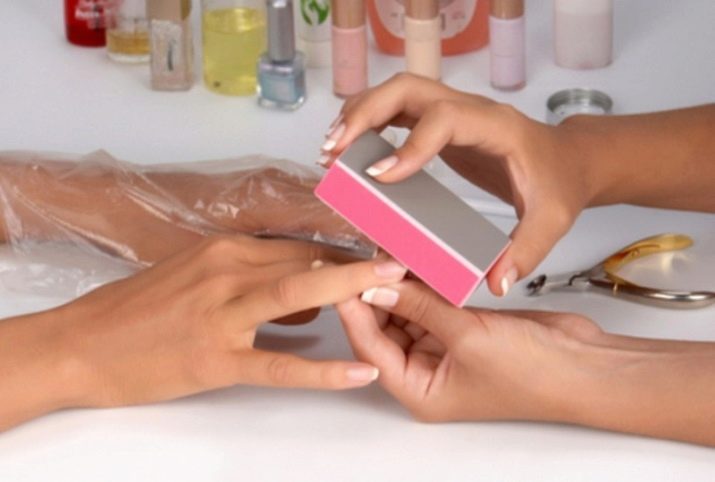
- Pusher or scraper it is necessary in order to push back the coarse cuticle and prepare the nails for gel coating. For an effective manicure, it is best to take a metal fixture with an ergonomic fluted handle. Usually one tip of a pusher is made in the form of a spatula, and the other resembles a sharp arrowhead. If you bought a scraper, then here one of the planes is made in the form of a hatchet.

- Tweezers or wire cutters - these working tools are required for cutting the cuticle and getting rid of painful burrs, as well as the corners of protruding nail plates. This tool usually has a well-honed surface and is considered to be much more effective than a rounded nail scissors or trimmer.
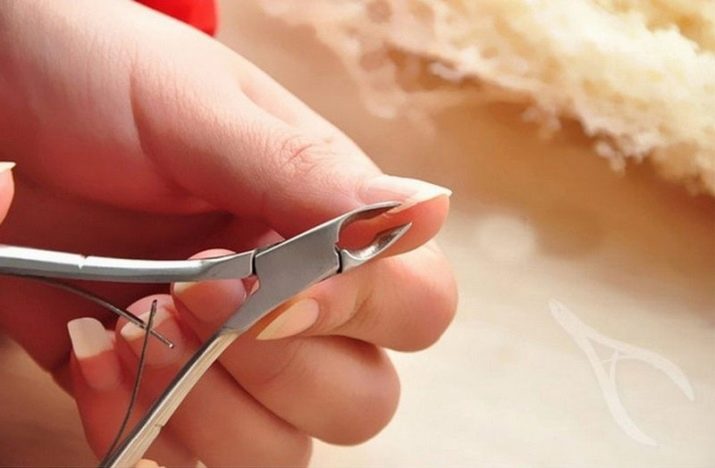
- To carry out building and decorating marigolds, you must purchase set of brushes: some should have straight synthetic bristles, others should be thinner, and you will also need a brush with a narrow tip.
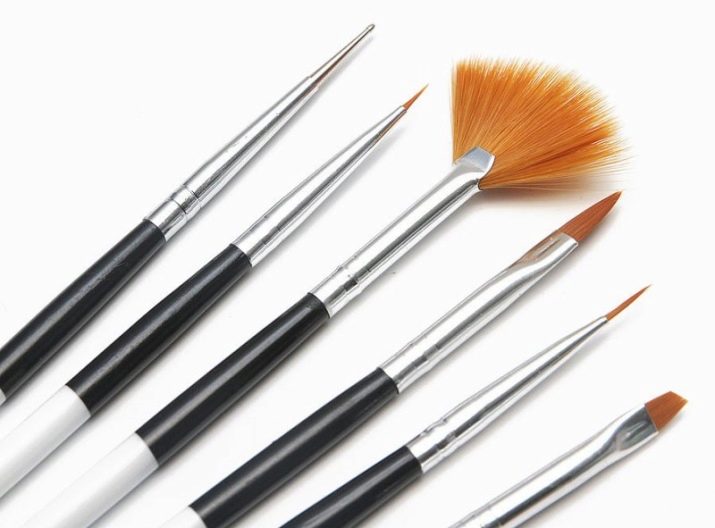
- In building, many masters use tips, in this case, you need to purchase a tip cutter with which you can model the edge of the free edge.
- After adjustments and resurfacing polymerized shellac, dust often appears, it must be removed from the surface of the nail - this is done with a manicure brush with a special synthetic bristle.
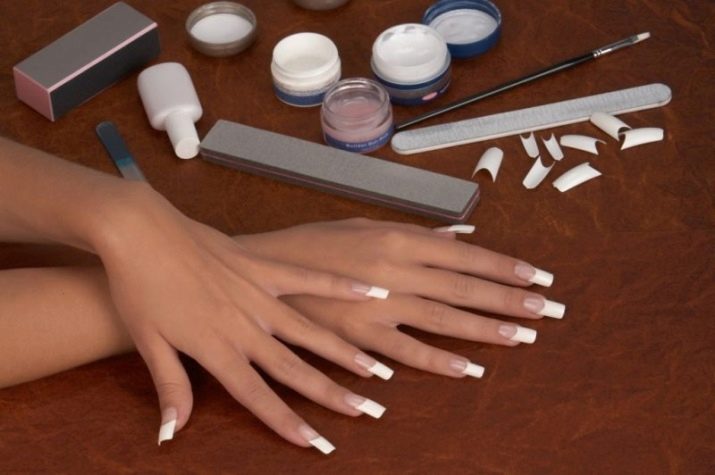
All of the above tools are required for building up in any technique, regardless of what exactly you are working with - with tips, gel or acrylic. And now let's dwell in more detail on the specialized consumables that are required for each separate type of extension.
For building with gel
The gel is considered the easiest polymer to use, which is more suitable for inexperienced craftsmen than others. It has a lot of advantages: it does not emit harmful substances and does not have a chemical pungent odor, which is why the material consistently holds the palm among all other types of coating. To work with the gel, you need to prepare:
- base gel - for beginners it is best to purchase a single-phase composition, which does not create any difficulties in application, but for more experienced craftsmen it makes sense to stop at two - or three-phase;
- camouflage gel - usually white, beige or pink are used;
- topcoat - it is necessary to give shine and evenness to the nail plates;
- concealer to degrease the sticky layer;
- shellac remover.
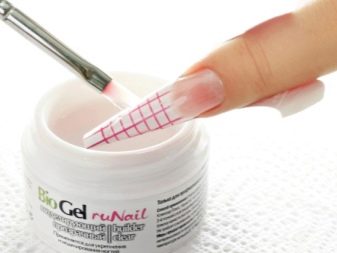
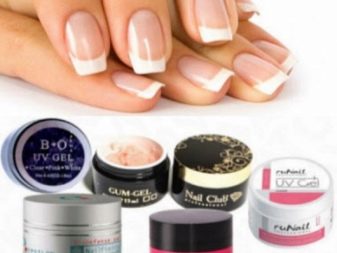
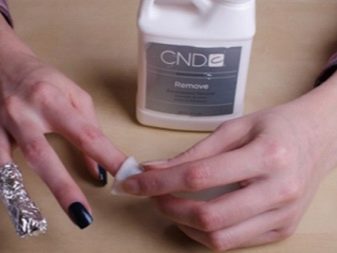
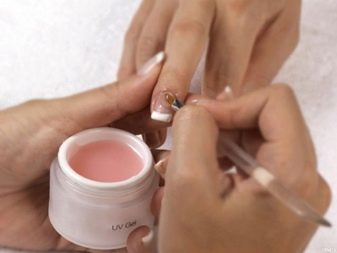
In addition to the above materials, you will need a special moisturizer for the cuticle: it softens the keratinized layers of the epidermis and prevents the appearance of burrs. Also, you will need cotton disks, lint-free napkins, acrylic-based paints for applying decor to the nail, as well as glitter, glitter, rhinestones and other interesting little things.
When using acrylic
When using acrylic, you will need a different set of consumables:
- monomer - special acrylic liquid;
- acrylic powder - a composition of transparent, pink or peach color;
- a means for dissolving acrylic, which is required when the work requires small adjustments.

In addition, you will certainly need a container where you will combine acrylic liquid with powder and clothespins with clips.
On the form
Extension of nails using a mold is considered to be a more complicated method than a manicure using tips. However, when using the highest quality materials and professional skills, it is not so difficult to get a good result. For such a build-up, first of all, special forms are needed. They are disposable and reusable: the former are made of paper and have a relatively low cost, while the latter are made of teflon on a wire frame.
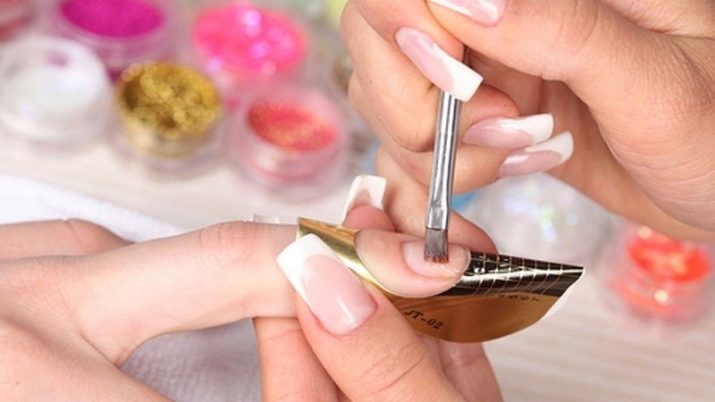
It is imperative to stock up on manicure napkins: they are thin cuts of fabric without lint, which well remove the sticky layer and remove the remains of decorative varnish.
Features of the procedure and possible problems
Now that you have purchased all the tools and consumables necessary for work, you can proceed directly to nail extension. The easiest way is to use a technique based on a gel composition, in this case, you can easily eliminate all visual defects of the nail. The increased surfaces have a lot of advantages: they do not exfoliate, do not crack or break. Artificial surfaces are extremely durable, so chips rarely appear on them.

The use of artificial nail plates gives the nails the required smoothness and allows you to successfully resist such serious problems as relief and uneven coverage. It should be noted that the ancient Chinese were still engaged in the technique of nail extension, a little later the technique was improved and spread throughout European countries. For a long time, acrylic was used for such a procedure, but today the use of gel is considered a more modern and effective technology. Thanks to its high elasticity, the marigolds are very strong, but at the same time thin. The shimmer of the gel completely mimics the natural color and structure of nails, thanks to which artificial coatings look very natural.
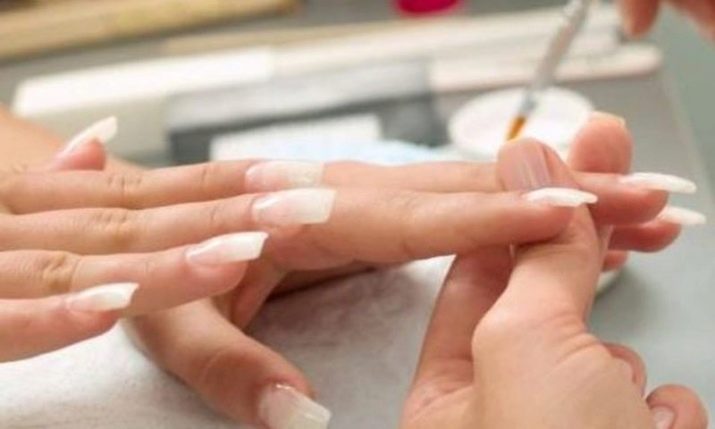
The use of gel compositions for nail extension has a lot of advantages:
- the whole procedure lasts no more than 2 hours;
- the coating at the exit is very durable and strong;
- due to the high elasticity of the drug, the nails have a rather long wear period;
- correction of gel nails takes about half an hour;
- the prices for such an increase are much more democratic than the cost of similar works with other compositions;
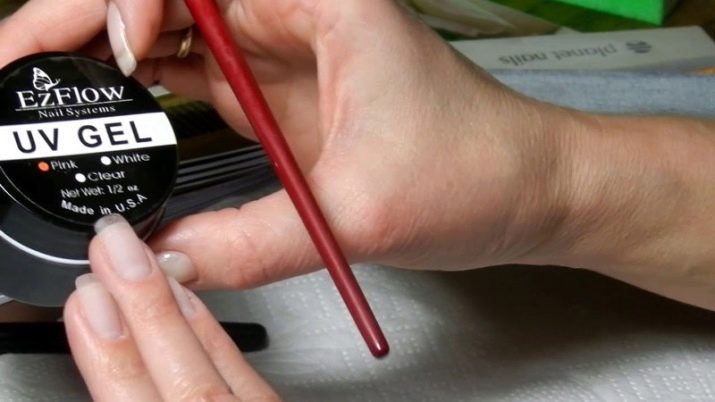
- when applying the gel, the nail plate does not collapse, moreover, the nails become stronger, which allows them to grow quickly without the danger of fragility and delamination;
- when using the gel, all cracks and ugly reliefs on the surface of the nail are filled with drugs;
- gel-based products give the nails a pleasant shine;
- gel nails are very easy to remove;
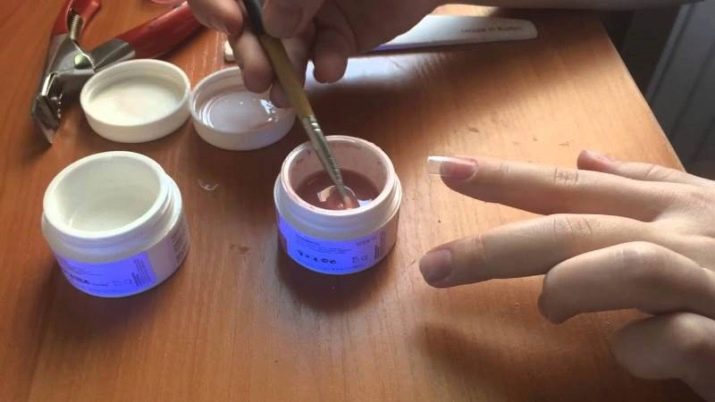
- the material is able to pass oxygen, so the native nail plate does not dry out;
- the use of the gel effectively protects nails from the dangerous effects of ultraviolet radiation, as well as household chemicals and all kinds of mechanical damage;
- the gel is a hypoallergenic material, its structure includes the resin of the needles, which has pronounced fungicidal properties and helps to prevent fungal diseases;
- and, of course, you can easily draw a wide variety of decors and designs of varying degrees of complexity on the gel.

However, there were some drawbacks. So, during polymerization under a UV lamp, sometimes a painful burning sensation appears, and if the nail breaks, then its repair is impossible, a complete replacement of the coating will be required. Only a master can remove gel nails, it is quite difficult to do it yourself without damaging the native plates, because for this you need to cut them off, and with little experience, in this case, damage to your nails can be caused.
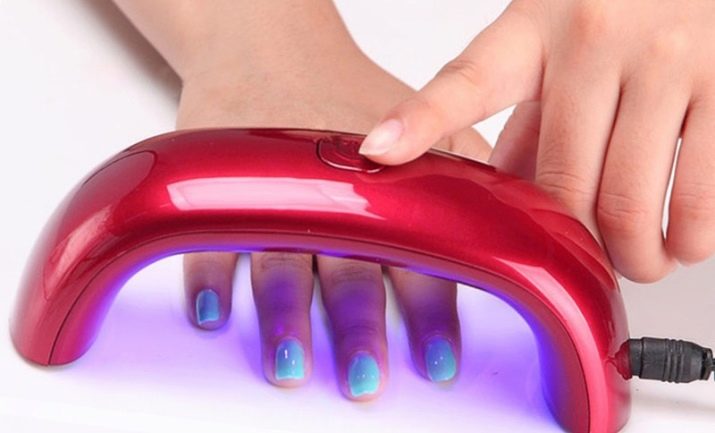
Also, with sharp fluctuations in temperature, gel coatings can deform. However, all these shortcomings are more than offset by the experience and professional skills of the master and the observance of the rules for caring for marigolds. Step by step nail extension is carried out as follows.
- The regrown edge of the nail plate is adjusted with a nail file so that a length of about 2 mm remains.
- The keratin layer is carefully treated with a buff until completely removed.
- Further, degreasing is carried out and a primer is applied.
- The gel material is applied in a thin layer and then polymerized in a UV lamp.
- A template is installed on the cover, it is very important to put it on correctly; on the border of the marigold and the form, a thin gel substrate is made, then it is processed in a lamp, and the sticky layer is removed.

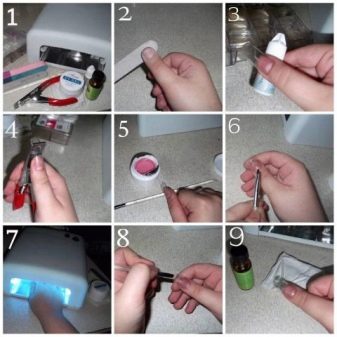
It is very important to distribute the preparation over the surface of the nail in such a way that its main part is in the middle, and the coating remains thin at the edges.
- After drying with a nail file, a smile line is formed and a base is applied.
- The templates must be removed and makeup applied.
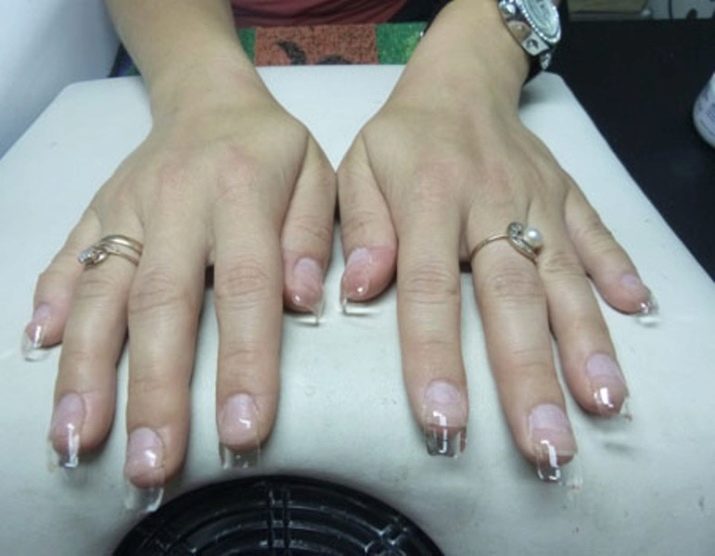
If nails are extended using tips, then the technology looks a little different: the peculiarity here is that the tips are not removed at the end of the procedure, they need to be glued to the nail plate.This technology is considered universal, tips are often used even on damaged nails, but it is quite difficult to work with them, because artificial nails must perfectly match the real ones in size, otherwise the coating will cling to everything. And the appearance will become untidy and unaesthetic.
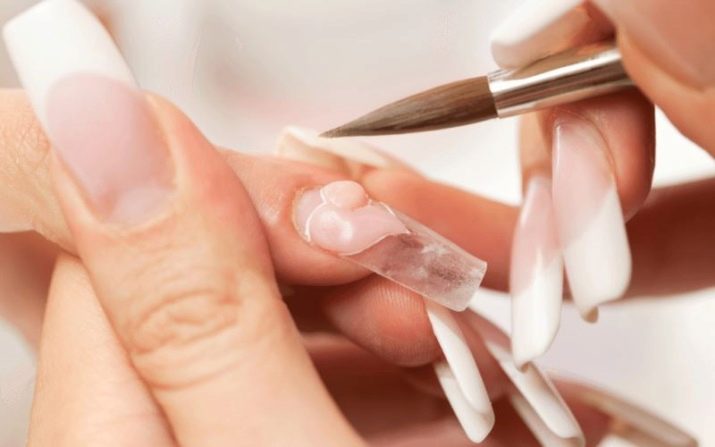
When building nails at home, you need to follow a few basic guidelines:
- the top layer of the nail plate is cut off with a buff until the nail acquires a matte shade;
- in the course of work, you should constantly inspect the nails at different angles so as not to leave even the smallest transitions and steps unnoticed and untreated;
- after the entire keratin layer is cut off, the resulting nail dust is removed with a brush, otherwise the coating will be sloppy;
- the solidification time of drugs in the lamp varies depending on the chemical composition and manufacturer, so be sure to read the instructions for them before starting work.

Selection Tips
Unfortunately, women rarely boast strong and healthy marigolds. Professional etiquette, a huge number of household duties and the need to look after children become an obstacle to growing nail platinum, so building becomes a real salvation for them. Modern technologies allow ladies to choose the type of extension that will be optimal in each specific case.
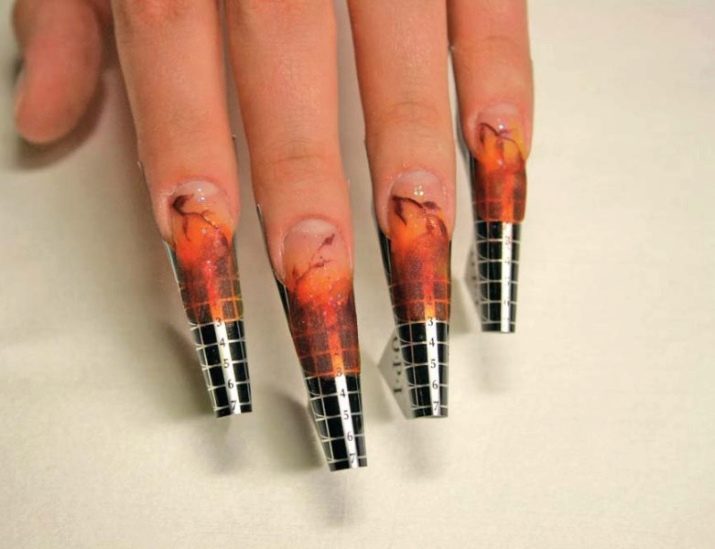
The cheapest option is false nails., even an amateur master without any special skills can cope with such a technique. However, this option is unreliable and unaesthetic, such nails are sold in large tapes-sets and include plates of different shapes, widths and lengths, but even a large selection does not always allow you to choose nails that will perfectly match the dimensions of the nail plate. As a result, they look very artificial.
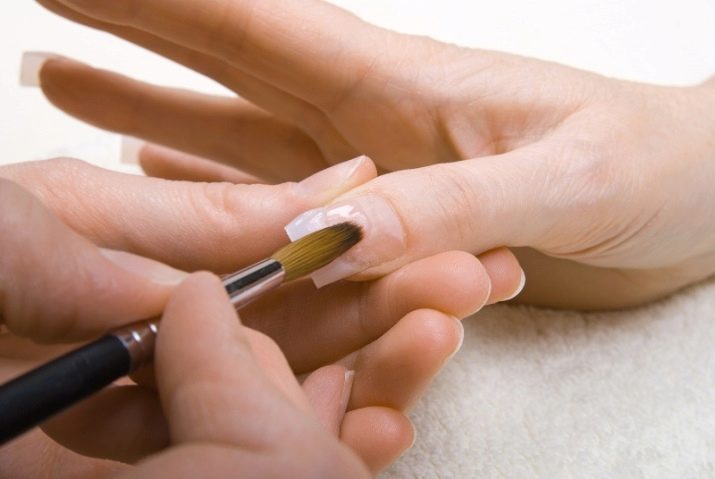
Building a house also requires nail glue.
Another form of finished nails are nail tips. They differ from overhead ones in that they are the basis for further modeling and are not attached to the entire nail plate, but only to its edge. Tips are made of more durable material and are characterized by the required flexibility. Tipped nails look more natural than false nails. The most modern method of building is considered modeling, it is made using materials such as gel, acrylic or biogel. The modeled marigolds look exceptionally natural, while the coating is more durable and durable.

Nails can be extended using acrylic compounds, this material is characterized by strength, and in addition, it has a relatively affordable cost. For acrylic, elasticity is unusual, so correction has to be done quite often. In addition, acrylic smells unpleasant and this smell accompanies you not only at the time of extension, but also for several days after it.
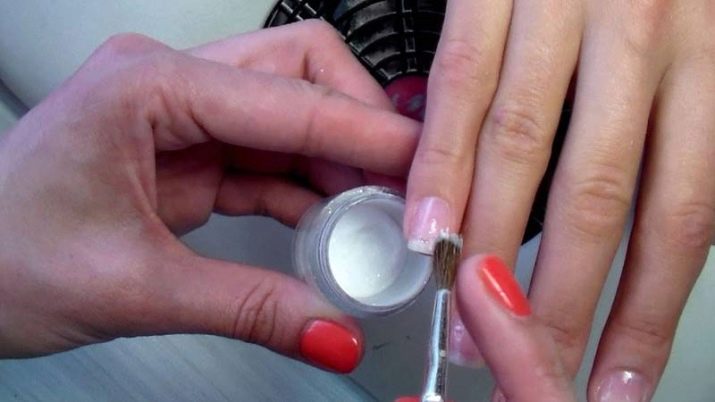
Gel preparations are considered safer, they are more plastic than acrylic, therefore, gel nails have a longer wear life. Such a build-up is, of course, more expensive, but adjustments will have to be done much less often. The most modern version of modeling is considered to be a technique based on biogel - a substance that combines both acrylic and gel, due to which the nails are strong and beautiful. The combination of these materials makes the marigolds much stronger and at the same time elastic, such a procedure will be quite expensive, but the result is undoubtedly worth it.
For information on what you need for nail extension, see the next video.








